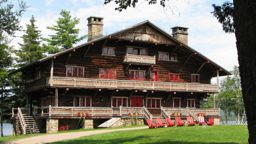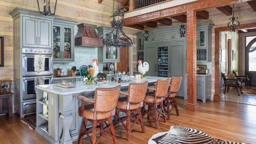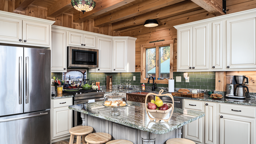
There’s a big difference between an interior designer and a decorator. While the latter is focused on making things look pleasing (e.g., where pictures should be hung, coordinating colors and fabrics, positioning furniture in the right place, etc.), interior designers are often directly involved in the home’s layout. And when it comes to log homes, this can be trickier than it is with conventionally framed houses. Simple things like placement for entertainment systems or Christmas tree lighting are something many people don’t consider while they plan but can become a challenge later on. Working with a licensed interior designer can help remove these obstacles.
In fact, lighting is a specific area that requires extra attention in a log home. Wood absorbs light, and, as such, log homes run the risk of feeling dark if an adequate lighting plan isn’t in place. Understanding of lumen output, the color of the light from warm to cool, as well as fixture scale and placement are important insights an interior designer offers.
But lighting is just one example of the hundreds of decisions a buyer will make. There’s also plumbing fixtures, appliances, countertops, cabinets, flooring — even doorknobs. An experienced designer can narrow the choices to ones that align with a client’s vision, budget and lifestyle, ultimately reducing selection fatigue.
When do you pull an interior designer into the loop? To reap the maximum benefit, enlist his or her services as plans are being drafted. It will help reduce the chance for change orders or worse — oversights — down the line.
How Do I find a Pro Designer?
Canada and most states in the U.S. have licensing requirements in place to help discern the true professionals from the hobbyists. Licensed designers typically have 4 to 5 years of education and another 4 to 5 years of field experience. Not only do they have to pass a rigorous practical exam, but also a lengthy written one. Look for NCIDQ, CIDQ, ASID and IIDA designations, and you’ll know they are trained and licensed professionals.
Start your search with The American Society of Interior Designers’ (ASID) directory at asid.org/find-a-pro.











